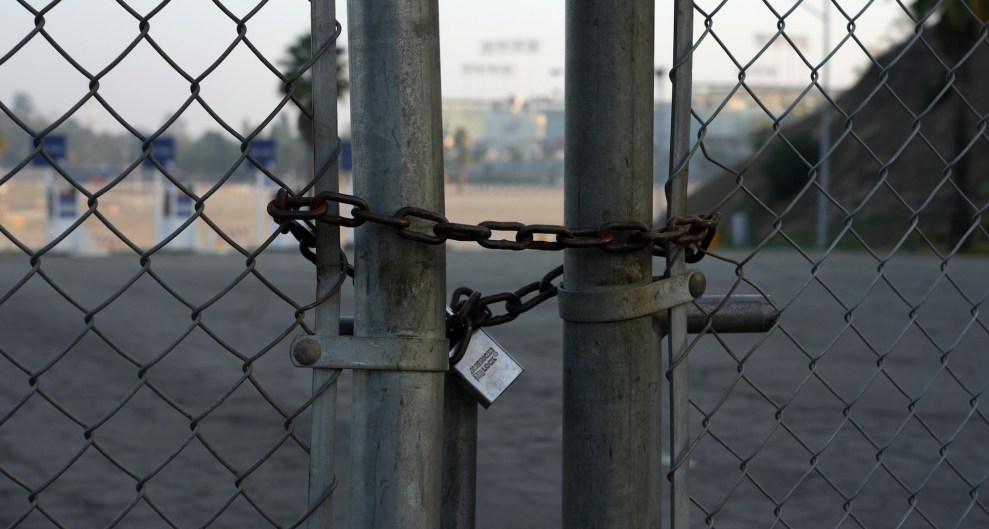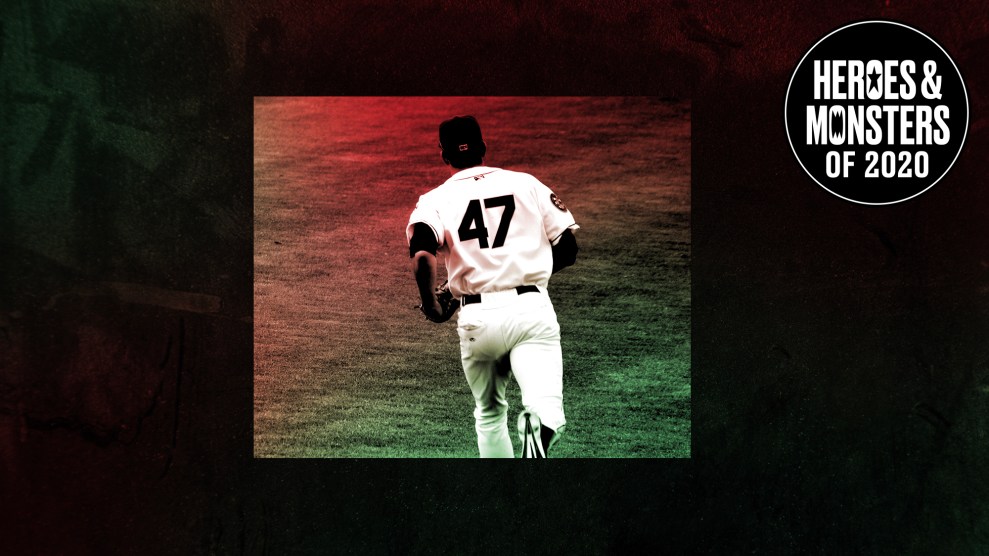
Closed and locked gates at Los Angeles' Dodger Stadium on the first day of the Major League Baseball lockout, December 2, 2021./Image of Sports/Newscom/ZUMA
Since December, Major League Baseball players have been locked out of their training facilities, thanks to a disagreement between their union and team owners. With the off-season coming to an end, the dispute is now guaranteed to postpone the start of spring training—and could potentially delay Opening Day.
This season’s lockout is the MLB Players Association’s first work stoppage since the 1994 season, when a labor dispute ended the season early and canceled the World Series. This time, players are demanding better pay for younger players (who are often underpaid relative to their contributions), changes to the free agency framework, and a major increase in the competitive balance tax, which sets a ceiling on teams’ total payroll and serves as an unofficial salary cap. All this inside baseball amounts to a guarantee that spring training, originally scheduled for February 26, won’t start until March 5 at the earliest.
In 1994, players launched a mid-season strike over a salary cap demanded by team owners, who argued that runaway salaries were threatening the league’s financial solvency. That strike was ended by none other than then-federal district court judge Sonia Sotomayor, who ruled that team owners couldn’t get around the strike by hiring non-union replacement players (otherwise known as scabs). Sotomayor’s ruling once again bound players and owners to the terms of their previous collective bargaining agreement, and players voted to return to work. Baseball remains the only major sport in the US to lack a salary cap.
The 1994-95 strike was a financial and public relations disaster—just think of all the money lost by canceling the World Series—and players and owners have tried to play nice, or at least keep up the pretense, ever since. Owners say that this year’s lockout, the first since 1990, was an attempt to spur negotiations and reach an agreement by the time teams are set to play ball.
Meanwhile, as players and owners engage in serious, complicated negotiations, New York’s much-maligned ex-mayor Bill de Blasio is proving that it’s never too late for him to make a mockery of himself online:
Here’s my message to @MLB and @MLBPA: STOP IT! Everybody CHILL! Spring Training should be starting RIGHT NOW. Americans have been through so much with COVID and we need the joy back in our lives. For the good of your country, put aside differences and PLAY BALL!
— Bill de Blasio (@BilldeBlasio) February 20, 2022

















